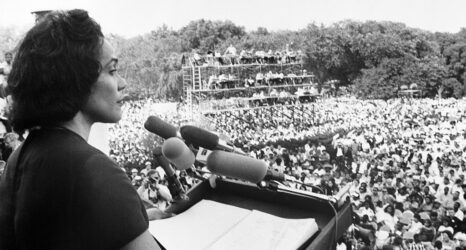Mary Walker was a fair-skinned fugitive slave woman who had escaped bondage in 1848, leaving her children and mother behind. Because of family ties, it was unusual for women to escape slavery and exceptional for mothers to forsake their children. Mary Walker believed she had no choice—after a dispute with her owner, he had threatened to send her to the Deep South. Her options narrowed to how she would be separated from her family, rather than whether. For her and for thousands who fled, freedom came at a price: remorse at parting without a word, silence forced by the danger of disclosure, fear for her family’s fate. One man, writing to the leader of the Underground Railroad in Philadelphia, gave voice to the pain felt by all who left family members in bondage. “My soul is vexed, my troubles inexpressible. I often feel as if I were willing to die. What is freedom to me, when I know that my wife is in slavery?”
Mary Walker’s anxieties fueled an odyssey of a dozen years to recover her children. In the struggle to free her family, Mary Walker was not alone. The best-known of the women who escaped slavery knew no rest until they saw their relatives released. Like Mary Walker, Harriet Tubman, Harriet Jacobs, and Sojourner Truth each fled only when faced with an irrevocable change for the worse in their lives. Harriet Tubman sensed that her Maryland owner, mired in debt, would soon put her up for auction. Harriet Jacobs discovered that her North Carolina master planned to remove her children to a nearby plantation, where he could make them plantation slaves and punish her for refusing to become his concubine. Sojourner Truth, whose name in slavery was “Isabella,” learned that the New York owner who’d promised her freedom meant to extend her bondage. Courage brought each woman to safety. But the fate of their families kept them in thrall. Harriet Tubman returned thirteen times to the eastern shore of Maryland to bring brothers, parents, and family friends to freedom. Harriet Jacobs escaped
the snares of her owner, but remained for seven years in the cramped attic of her free Black grandmother’s home, until assured that her children were liberated. Sojourner Truth brought suit in a New York courthouse to reclaim the son sold to an Alabama planter. The triumphs of these women became the stuff of legend.
Mary Walker’s experience was a more wrenching, more protracted, and probably more representative struggle than that of the trio of ex-slave women whose defiance made them heroines. A displaced person obliged to start a new life among strangers, Mary Walker had to learn whom to trust and how to survive. When she began the quest to reclaim her family, she turned to intermediaries, lest she reveal her location and risk recapture under the Fugitive Slave Law of 1850. Though many abolitionists renounced ransom or personal appeals to slave-holders as concessions to the crime of slavery, Mary Walker found friends who understood her anguish and who were willing to commit themselves to redeem her children. Together or separately, they ventured half a dozen attempts at liberation, from ransom to ruse to rescue.
Mary Walker’s quest illuminates the secret strivings of thousands who sought to free family members still living behind the Cotton Curtain. For the refugees and those who helped them, theirs was a hidden epic of emancipation—the redemption of one family at a time—which paralleled the great social movement to end slavery altogether and preceded its ultimate triumph.
Mary Walker was eventually reunited with her children. Read about how she accomplished it in To Free a Family, new from Harvard University Press.
Excerpted from To Free a Family by Sydney Nathans. Copyright © 2012 by the President and Fellows of Harvard College. Used by permission. All rights reserved.
Read More:





